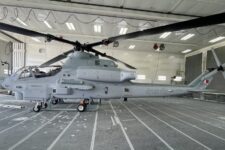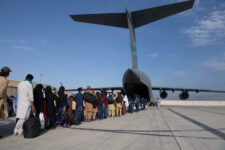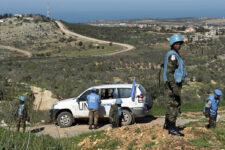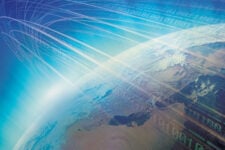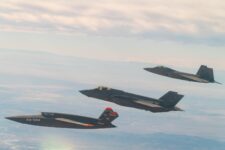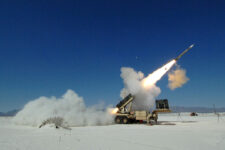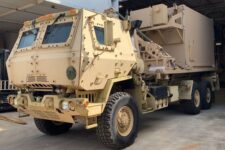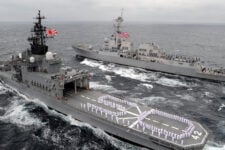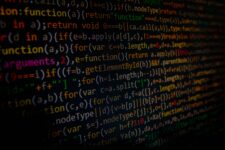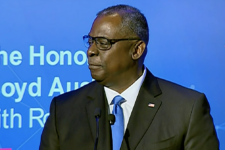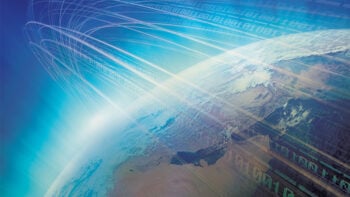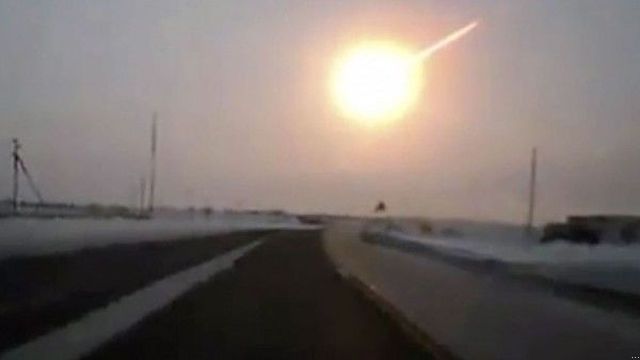
The public experienced a moment of angst in 1997 when it looked like Asteroid XF11 might threaten the Earth in 2028. It didn’t. But that doesn’t mean the threat doesn’t exist or that we should do nothing about it.
Asteroids and comets that come close to Earth are collectively known as Near Earth Objects (NEOs). In 1998, Hollywood released two movies dealing with NEOs, Deep Impact and Armageddon. The first movie, Deep Impact, focused on the human emotions related to impending doom, while Armageddon was an action-hero film. In it, Bruce Willis and his rag-tag band of oil drillers save humanity from an approaching killer asteroid, taking off in the Shuttle and within just 18 days of the asteroid being sited, deflect it away from Earth.
Congress held hearings on threats to Earth from space, showing the public it was paying attention and increasing the NASA “search” budget from $1.5 million to $3 million, which led to the opening of the NASA Near Earth Object program office.
In 2000, a colleague and I co-authored an article titled “Preventing Armageddon: Hype or Reality.” Hollywood, we pointed out, has made galactic amounts of money on space sci-fi movies. The upside of that, from a public policy perspective, is that it keeps space travel and exploration in the public consciousness, even though that consciousness does not always translate into funding support.
The down side is that Hollywood directors are not bound by the laws of physics, unlike scientists and engineers who would have to deal with potentially threatening NEOs. And so, many Americans — some of whom are barely scientifically literate in the first place, according to the 2012 figures from the National Science Foundation — accept Hollywood’s broadly stretched version of science and fact.
In the 1998 blockbuster Enemy of the State, for example, a satellite seemingly hovered over hero Will Smith, following him around. Satellites orbit. A satellite in orbit cannot hover over a moving object on Earth. Whether audiences recognize that, though, is doubtful. The blurring of science fact and fiction has subjected the NEO issue to short-lived public and political attention, brought to the forefront only when nature (literally) throws a curveball toward Earth, but then quickly forgotten or viewed with no more seriousness than the aliens who were the plot catalysts in Alien, Independence Day, or Men in Black.
There now appears an opportunity to change that casual and dangerous dismissal of the NEO issue. On April 5, Sen. Bill Nelson announced there would be $100 million in NASA’s 2014 budget for a new mission to robotically harness an asteroid and bring it near the Moon for study by human explorers.
President Obama had already set an asteroid as a “next destination” for human exploration, largely because of the cadre of influential individuals and policy-makers who were clamoring for a space destination after the Constellation Moon mission was cancelled. The new mission would speed up the timetable to 2021, and insert a human element, both desirable from the cynics and haters who have bemoaned lack of direction for NASA since Constellation’s demise.
Bruce Willis Can’t Save Us
Earlier this year, the House of Representatives and the Senate held hearings assessing threats and risks to Earth after another NEO curveball appeared from space, and exploded in the air over Russia in February.
I testified March 20 before the Senate Committee on Commerce, Science & Transportation, Subcommittee on Science & Space, on “Assessing the Risks, Impacts & Solutions for Space Threats.” In his opening statement, Sen. Ted Cruz said he wished Bruce Willis could join us as the fifth panel member. I’m all for Bruce Willis participating for the attention he would draw to the issues, which I’m confident is what Senator Cruz meant as well. But much of the public and even some decision-makers still have difficulty sorting fact from fiction, and myth from reality regarding dealing with NEOs.
They are unclear regarding what would need to be done, and when, and what is possible now or in the near future to deflect a threatening object away from Earth. Consequently, there is a real potential for the asteroid capture mission to be derailed as scientifically and economically unnecessary. That must not happen. When XF11 passed by Earth in 1997 the public was largely told, “don’t worry, be happy.” A Reuters news article entitled “We Could Have Stopped That Asteroid Anyway,” quoted NASA’s Don Yeomans as saying: “We would send a spacecraft with a nuclear weapon probably” as the answer to deal with NEO threats. Buried deeper in the article was the rest of Yeomans’ quote, explaining the option works best with 30 years notice and that with much less than that, things get problematic.
Yeomans is now head of NASA’s NEO program, and the 30-year window still holds true. For a NEO threat to be effectively abated, it must be seen many years in advance; the composition of the NEO must be known so it can be properly deflected, rather than exploded (exploding a NEO just takes one big rock and turns it into many smaller ones, but the impact point would still be the same: Earth), and there must be a capability to deflect it.
In 1998, NEO Hunter David Morrison, then at NASA Ames Research Center, pointed out on a Discovery Channel broadcast that: “The total effort that we, the citizens of planet Earth, are putting into scanning the sky for potentially dangerous comets and asteroids is less than the staffing of one McDonalds restaurant – a handful of people.”
Since that time, NASA has increased its asteroid-hunting efforts. It has increased cataloguing efforts and it has sent robotic probes to study them. OSIRIS-Rex is the next such probe, planned for launch in 2016. Nevertheless, government efforts to deal with a problem that is not a question of “if” but “when” have been lacking to the extent that a private foundation, called B612, is trying to raise funding from philanthropists to build and place a space-based infrared telescope in a special orbit around the Sun to afford a better view of NEOs in the vicinity of Earth. But NEOs are not a problem that should be privatized or left to philanthropic efforts.
And then there are the issues regarding what to do once a threat has been identified. Concurrent with the release of Armageddon, ABC Television aired a 30-minute show called “Armageddon: Target Earth.” The two-fold intent was to promote the movie, and to at least acknowledge the broad scientific license taken in making the film. As one of several people interviewed, my cryptic line in the show was that if the public thought identification of a NEO threat would result in a call to the Air Force to take care of it, “there was nobody to answer the phone.” Harnessing and studying an asteroid would be a first step in building the capabilities to effectively respond to a NEO threat.
Harnessing an Asteroid
There are already naysayers to the new asteroid mission. First, there are those who question the mission. Scott Pace, director of George Washington University’s Space Policy Institute, has been critical of the plan as a bad idea scientifically and bad for international cooperation. He suggested that NASA and other countries first join forces for a comprehensive survey of all possible dangerous space rocks.
This new NEO mission offers something for everybody to the previous naysayers: a role for robotics, a role for human spaceflight, a destination, and a feasible timetable. Further, it involves activities not done before, providing the U.S. an opportunity to keep expanding its space capabilities and again demonstrate leadership in space, not unimportant aspects of the program.
In terms of international cooperation, China’s official news service Xinhua reported interest from Russia’s Roscosmos space agency in joining in an asteroid defense program with the United States. The article said that Roscosmos head Vladimir Popovkin called for joint efforts from various countries, as asteroids are dangerous for the entire Earth, not just one country. “We will be able to protect ourselves only if we work together,” Popovkin was quoted as saying.
Considering a manipulated asteroid as a space weapon doesn’t help the cause of sorting fact from fiction either, though it will likely be raised by someone as an objection to the proposed asteroid mission. In 2012, the Keck Institute for Space Studies proposed a similar mission to NASA, at a cost of $2.6 billion. Clearly, that amount is out of NASA’s range when budgets are being cut and sequestration is the word of the day. But is $100 million?
To those who question the value of a space program at all, and those who will undoubtedly argue that the money should be found from elsewhere in the NASA budget, consider this. Planetary defense is not a science project, it is a matter of national security. So rather than comparing the amount against other science programs, it should be considered against other national security programs: the F-22 Raptor, for example. The fleet of 196 Raptors is estimated to cost between $137 million and $678 million, each, depending on whether development costs alone are considered, or development and production. But, it could be argued, the F-22 is intended to address known, near-term threats, as opposed to abstract, potentially long-term threats such as asteroids. However, consider this observation about the F-22 from 2011: “Since the F-22 entered service in 2005, every other operational warplane in the U.S. arsenal has seen action in Iraq, Afghanistan, Libya or other conflict zones. But the tiny fleet of F-22s, optimized for ultra-rare dogfighting missions, missing key upgrades and frequently grounded, hasn’t flown a single combat sortie.”
When, Not If
In 1908, a small asteroid exploded over the Tunguska region of Siberia. Earlier this year, another fireball streaked across the Russian sky, exploding over the central Russian city of Chelyabinsk, injuring about 1,200 people, mostly by flying glass. If a similar-sized asteroid to either of these were to explode in a heavily-populated area of the world today, it would be devastating. Even if the object exploded before actually hitting the ground, the force released is equivalent to that of an atomic blast. Former astronaut and chairman of the B612 Foundation, Ed Lu, stated at the March 20 Senate hearing that some 7 million people would die if a Tunguska event-sized asteroid exploded over New York City.
Asteroids of this size are not the so-called doomsday objects Hollywood has portrayed, and that is believed to have resulted in the extinction of the dinosaurs and some 80% of all life forms on Earth 65 million years ago. Since Bruce Willis can’t save us, it is time to work toward saving ourselves. There are many steps that need to be taken in that direction, but the asteroid capture mission gives the U.S. – and potentially other countries as well — a place to start, as well as giving NASA the direction it has sought, and needed. There remain a multitude of questions that need to be addressed about the mission, but the concept is a solid one which deserves time to be fleshed out. It will address the NEO issue from a perspective of fact, not fiction.
No service can fight on its own: JADC2 demands move from self-sufficiency to interdependency
Making all-domain operations a warfighting capability means integrating, fusing, and disseminating a sensor picture appropriate for a particular theater segment, not all of them, says the Mitchell Institute’s David Deptula.

